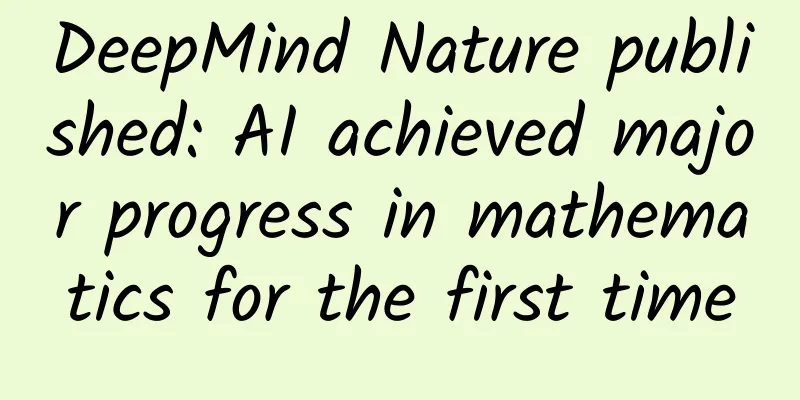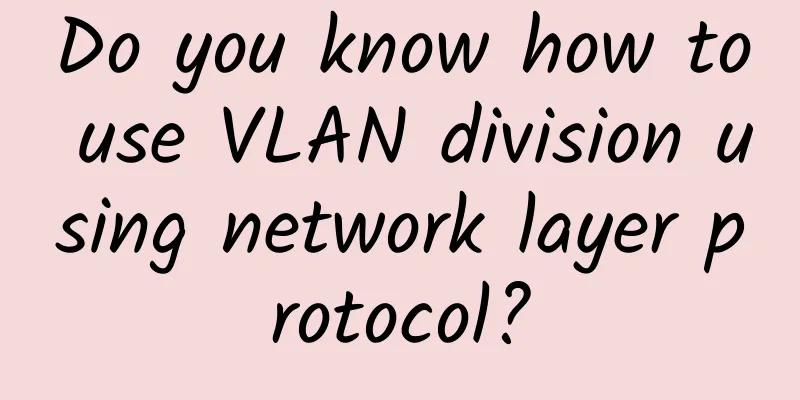DeepMind Nature published: AI achieved major progress in mathematics for the first time

|
Mathematics is an ancient discipline that involves discovering patterns and using them to formulate and prove conjectures, thereby generating theorems. Since the 1960s, mathematicians have used computers to help find patterns and formulas in conjectures, the most famous case being the Birch and Swinnerton-Dyer conjecture, one of seven problems in the Millennium Prize in Mathematics, a famous problem in number theory. However, to this day, there are few examples of computers proving important theorems in basic mathematics. Now, a DeepMind achievement shows even more possibilities: For the first time, computer scientists and mathematicians have used AI to help prove or propose new mathematical theorems, including in the fields of knot theory and representation theory, which are complex theories. These surprising results were published today in the famous scientific journal Nature, with the paper titled "Advancing mathematics by guiding human intuition with AI." In this paper, the author team proposes to use a machine learning model to discover underlying patterns and connections between mathematical objects, use attribution techniques to assist understanding, and use these observations to further guide intuitive thinking and the process of making conjectures. Professor Geordie Williamson is the director of the University of Sydney's Institute of Mathematics and one of the world's foremost mathematicians with a distinguished track record in pure mathematics. As co-author of the paper, he successfully leveraged the power of Deep Mind's AI to make bold discoveries in his area of expertise, representation theory.
Photo: Geordie Williamso Readers who are familiar with artificial intelligence are no strangers to DeepMind. The team of computer scientists behind AlphaGo once successfully defeated the world champion in the 2016 Go game. Since then, DeepMind has always adhered to the concept of using AI to help solve major scientific problems. Basic mathematics undoubtedly belongs to the category of major scientific problems (even the foundation). As Professor Geordie Williamson said: "Mathematical problems were once considered the most intellectually challenging problems... Although mathematicians have used ML to help analyze complex data sets, this is the first time that we have used computers to help form conjectures or propose possible breakthrough routes for unproven ideas in mathematics." Helping top mathematicians prove mathematical conjectures In this study, AI helped explore the mathematical direction of representation theory. Representation theory belongs to the theory of linear symmetry, which is a branch of mathematics that uses linear algebra to explore high-dimensional space. Professor Williamson is a world-renowned leader in representation theory. In 2018, he became the youngest living member of the Royal Society of London, the oldest and arguably most prestigious scientific society in the world. Professor Williamson said: "In my field, in order to prove or disprove long-standing conjectures, you sometimes need to consider infinite spaces across many dimensions and extremely complex systems of equations." While computers have long been used to generate data for experimental mathematics, the task of identifying interesting patterns has relied primarily on mathematicians' own intuition. It is well known that mathematicians' intuition plays an extremely important role in mathematical discovery - "only by combining strict formalism and good intuitive thinking can complex mathematical problems be solved." However, things are changing now. As shown in the figure above, the paper describes a general framework approach under which mathematicians can use ML tools to guide their intuition about complex mathematical objects, verify assumptions about the existence of relationships, and understand these relationships. Professor Williamson used DeepMind's AI to get closer and closer to the goal of proving the old conjecture about Kazhdan-Lusztig polynomials. Of course, these conjectures involve deep symmetries in high-dimensional algebra. It can be said that Kazhdan-Lusztig (KL) is one of the most important developments in algebraic group representation theory in the past 40 years. Professor Marc Lackeby and Professor András Juhász from the University of Oxford further investigated this process. They discovered a surprising connection between the algebraic and geometric invariants of knots, establishing a completely new theorem in mathematics. These invariants can be derived in many different ways, and the research team focused on two main categories: hyperbolic invariants and algebraic invariants. The two come from completely different disciplines, which increases the challenge and interest of the research. Figure 2 shows some examples of invariants. The research team hypothesized that there is an undiscovered relationship between the hyperbolic and algebraic invariants of a knot. The supervised learning model was able to detect a large number of patterns between geometric invariants and signatures. As shown in the figure below, the most relevant features were determined by attribution techniques. Analyzing the marginal distribution of the most relevant salient subgraphs identified by computational attribution techniques compared to the original graph helps further explore structural evidence. In knot theory, invariants are not only used to distinguish one knot from another, but also help mathematicians understand the properties of knots and how they relate to other branches of mathematics. Knot theory is fascinating in its own right, and it has no doubt fascinated the physical sciences as well, with applications ranging from understanding DNA strands and fluid dynamics to the interplay of forces in the Sun's corona. "The way pure mathematicians work is by formulating conjectures and proving them, which leads to theorems," said Professor Juhász. "But where do these conjectures come from?" We have demonstrated that, guided by mathematical intuition, ML provides a powerful framework for discovering interesting and provable conjectures in domains where large amounts of data are available or where the objects are too large to be studied using classical methods. Professor Lackeby also said: "It has always been interesting to use ML to discover novel and unexpected connections between different areas of mathematics. I believe that the work we have done in Oxford and Sydney University in conjunction with DeepMind is enough to prove that ML can be a really useful tool in mathematical research." AI bravely enters the realm of mathematics The first author of the paper is Dr. Alex Davies from DeepMind. He believes that AI technology is advanced enough to strongly promote scientific progress in many different disciplines. Pure mathematics is a typical example. "We hope that this Nature paper will inspire and enlighten other researchers to fully realize the potential of AI as a useful tool in their research fields." Professor Williamson said: “AI is a phenomenal tool. This work is the first demonstration of its usefulness to pure mathematicians like me. Empirical intuition can take us a long way, but AI can help us find connections that the human mind might not always easily discover.” As it turns out, intuition plays an important role in many of the extraordinary performances that humans strive for. For example, it is crucial to top Go players, with AlphaGo’s success stemming in part from its ability to use ML to learn elements of the game that humans intuitively perform. Similarly, it is considered key to top mathematicians—Ramanujan was known as the “Prince of Intuition,” sparking the curiosity of famous mathematicians to consider the place of intuition in their fields of study. But compared to Go, mathematics is a unique and more collaborative job, so AI does have room and potential for fruitful results in assisting mathematicians in completing related work. Regarding the discussion on whether AI and mathematics can be integrated and progress together, Academician Xu Zongben also gave an impassioned report entitled "AI and Mathematics: Integration and Progress" at the CCAI 2019 Academic Conference. He proposed that AI and mathematics have amazing consistency in methodology. The foundation of AI is mathematics. If we want to move forward steadily, the first consideration is to solve mathematical problems; and the development of AI will inevitably help research in the field of mathematics. The team in the paper also has similar hopes. They said that they hope this work can serve as a model for deepening cooperation between the fields of mathematics and AI, giving full play to the respective advantages of mathematics and ML to achieve amazing results. Professor Williamson said: "To me, these findings are a reminder that intelligence is not a single variable, like an IQ number. Clearly, intelligence is best defined as a multi-dimensional space with multiple axes: academic intelligence, emotional intelligence, and social intelligence. I hope that AI will give us another axis of intelligence to work together on, and that this new axis will powerfully deepen our understanding of the mathematical world.” |
>>: Education takes off with 5G smart technology
Recommend
Why does TCP need three handshakes and four waves?
[[402116]] This article is reprinted from the WeC...
Behind Gu Ailing's victory at the Winter Olympics: Communications people are silently persevering
7×24 hours uninterrupted protection Communication...
ReliableSite: 1Gbps unlimited dedicated server in New York/Miami/Los Angeles starting from $29/month
ReliableSite is a business that specializes in pr...
Can 5G extend the life of HTC’s desperate VR business?
5G is like a "tonic pill" that has sudd...
Watch Process Little P tell its network performance story!
[[394922]] This article is reprinted from the WeC...
IDC: 5G commercialization will greatly benefit the manufacturing industry
The issuance of 5G licenses in China has greatly ...
How 5G will impact IoT technology
According to many predictions, the Internet of Th...
10 Useful HTML File Upload Tips
[[351004]] The ability to upload files is a key r...
Game software crashes and reports errors every day? A magic tool that solves the problem with one click
[[349399]] Many friends have encountered the prob...
Analysis on the Evolution of Home Wi-Fi Transmission Network Technology
Author: Tang Xiangming, Unit: China Mobile Smart ...
Industrial Internet + 5G, we must plan carefully before taking action
In the previous article, "IoT operating syst...
Are operators “breaking away from” the old ways? 2G/3G networks will eventually leave the stage
Recently, China Telecom Yunnan Company (Yunnan Te...
The American Internet is about to undergo a major change: Is the protective umbrella Section 230 really going to disappear?
"Revoke 230!" US President Trump wrote ...
Have you used "Online Documents"? It allows multiple people to work together and synchronize content in real time. It's so efficient!
Have you ever encountered a situation at work whe...
PTC DPM: Dramatically improving manufacturing efficiency again
According to McKinsey's research report "...









